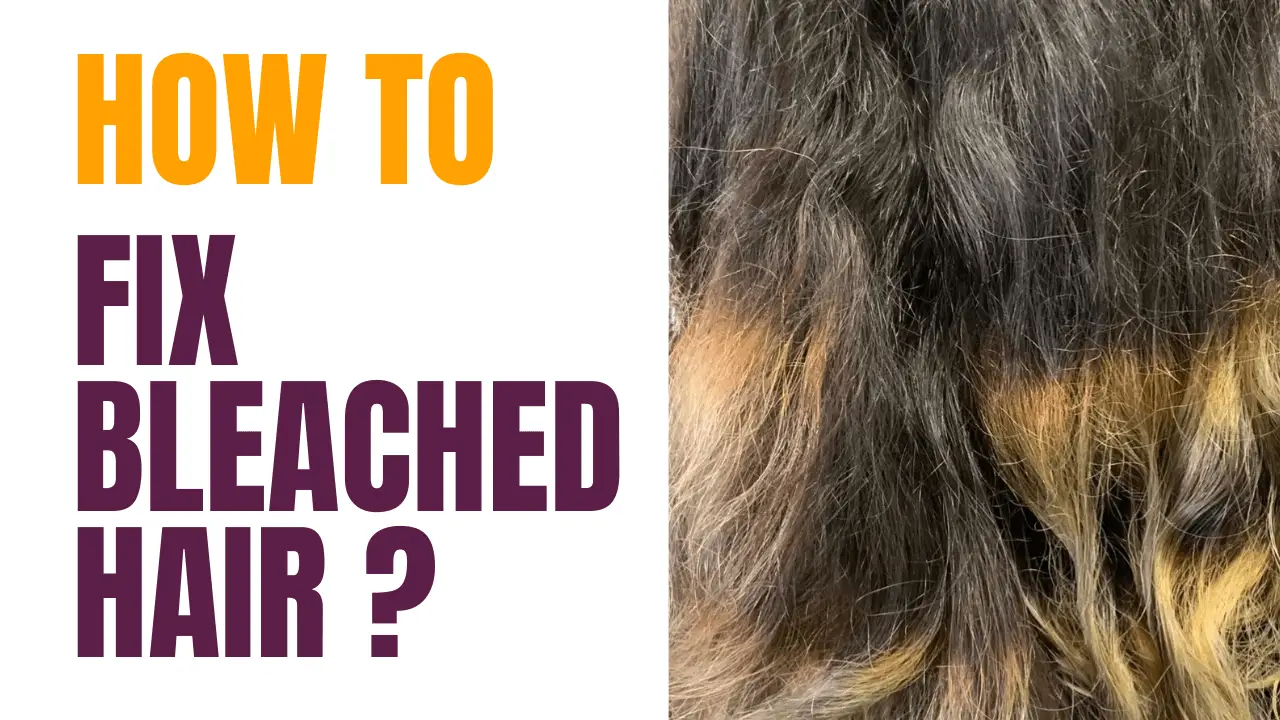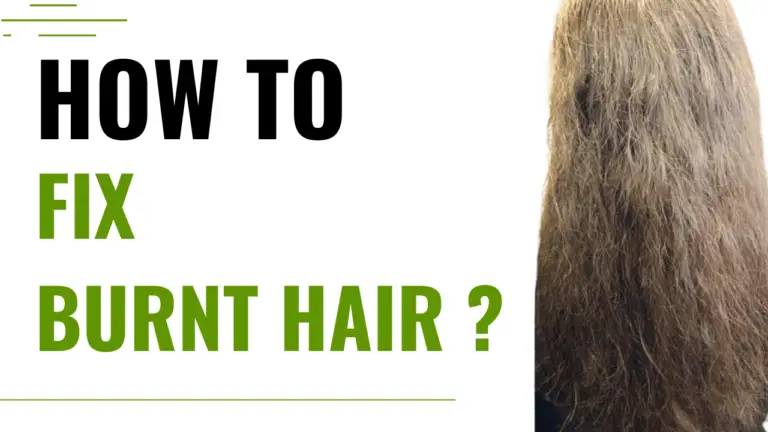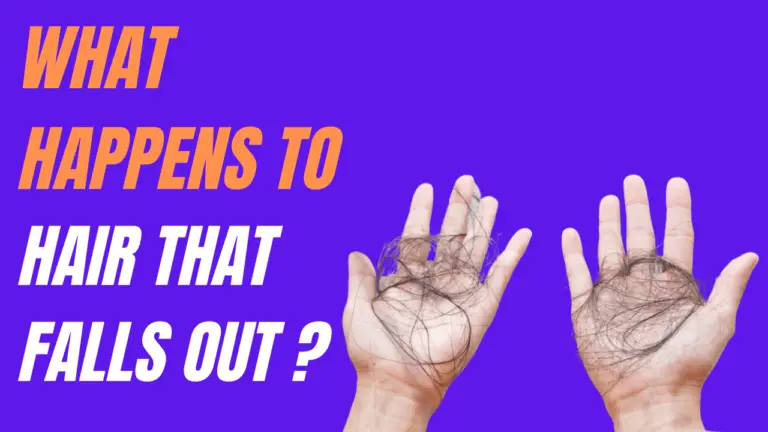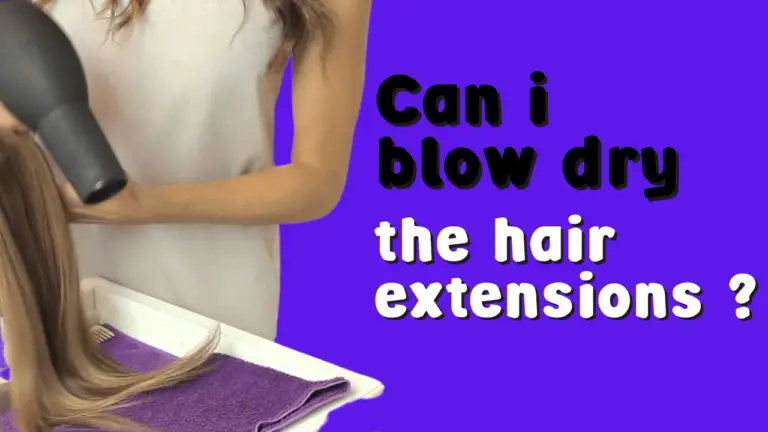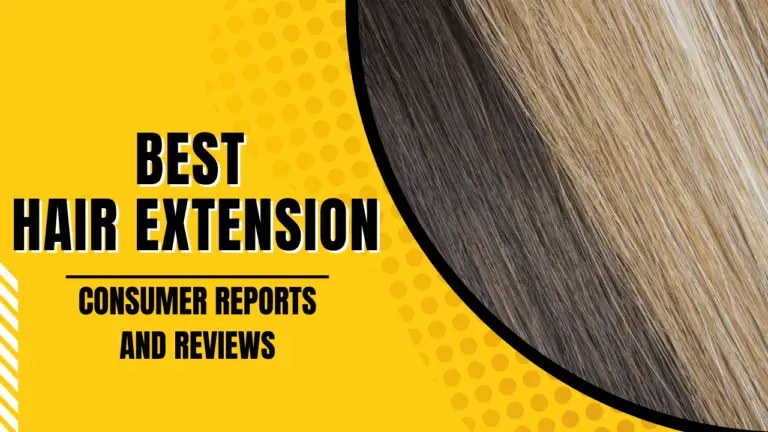How To Fix Bleached Hair?
Last Updated on September 25, 2023 by Emily
If your hair feels dry, brittle, and generally damaged after being bleached, don’t despair – there are a few things you can do to get it back to its former glory.
- Start by using a deep conditioner once a week. You can leave it on for 20 minutes or overnight, depending on your time. If your hair is damaged, you might also want to use a leave-in conditioner. Look for products that contain protein, which will help to fortify your hair and make it more resistant to damage.
- Be sure to use a heat protectant spray before using any heating tools on your hair. This will help to prevent further damage. When you do use heat, please keep it on a low setting.
- Avoid using any styling products containing alcohol, as this can dry out your hair and make the damage worse. If you must use them, be sure to apply a leave-in conditioner afterward to help offset the drying effects.
In general, try to give your hair a break from any harsh treatments. Let it air dry whenever possible, and avoid using too much product. If you can, let your hair down more often, and style it in loose, gentle styles.
With some care and attention, you can return your bleached hair to look healthy and shiny in no time!
Contents
How To Identify Bleach Damaged Hair?
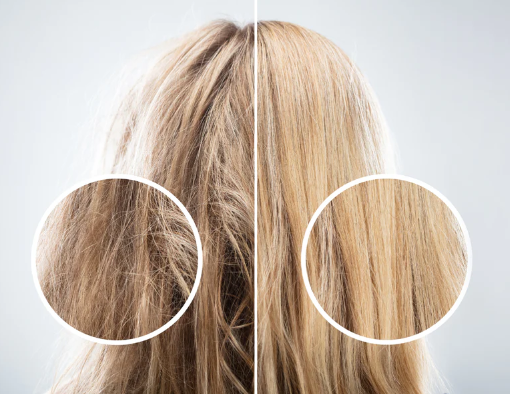
- One way to determine the severity of the damage is to do a “strand test.” To do this, take a small section of hair and gently tug on it. If the hair stretches before breaking, it’s probably only mildly damaged. However, the damage is more severe if the hair breaks easily or feels like it might tear.
- When hair has been damaged by bleach, it can appear frizzy and generally unhealthy.
- Damaged hair can be challenging to manage and style.
- The ends may be split or frayed, and the hair’s overall texture may be rough.
- If you run your fingers through your hair, it may feel straw-like.
- Damaged hair may also lack luster and shine.
How To Repair and Fix Bleached Hair?
Hydrating Bleached Hair
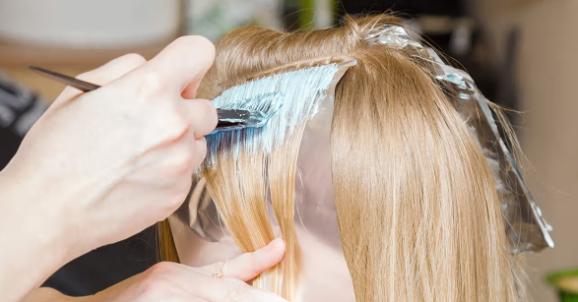
Using Homemade Items:
- Olive oil: Olive oil can be used as a pre-shampoo treatment. Apply a small amount of oil to your hair and scalp, concentrating on the ends. You can also add a few drops of oil to your regular conditioner for extra hydration.
- Coconut oil: Coconut oil is another good option for hydrating bleached hair. The Lauric acid in coconut oil can help to repair damaged hair and make it softer and shinier.
- Argon oil: Argon oil is rich in antioxidants, which can help to protect your hair from damage. Apply a small amount of oil to your hair and scalp, and leave it on for 20 minutes before shampooing.
- Honey: Honey is natural humectants, which helps lock in moisture. Apply a small amount of honey to your hair, and leave it on for 20 minutes before shampooing.
- Almond oil: Almond oil is rich in vitamin E, which can help to nourish and protect your hair and scalp after bleaching.
- Shea butter: Shea butter is a good option for hydrating bleached hair. Shea butter’s fatty acids can help repair damaged hair and make it softer and shinier.
Essential Oils For Repairing At Home
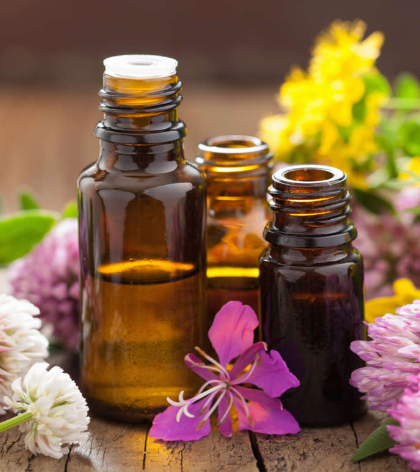
- Rosemary oil: It is also known to promote hair growth. Add a few drops of rosemary oil to your regular shampoo or conditioner, and use it daily. You can also add a few drops of rosemary oil to olive oil and massage it into your scalp and hair. Leave it on for 30 minutes before washing it off.
- Cedarwood oil: It is known to make hair softer, shinier, and smoother. Cedarwood oil also has antifungal and antibacterial properties that can help prevent scalp infections.
- Onion juice: Chemicals in hair bleaching products can strip away the natural oils from your scalp and strands, leaving them dry and susceptible to breakage. Onion juice is rich in sulfur, which can help replenish lost nutrients and strengthen your hair. Just mix equal parts onion juice and water, apply it to your hair, and let it sit for 15 minutes before rinsing it out.
- Peppermint oil: Peppermint oil is rich in antioxidants, which help to protect the hair from damage. It also has anti-inflammatory properties, which can help to soothe the scalp and reduce irritation.
Try using these oils regularly to see the best results.
Using Normal Hair Care Products:
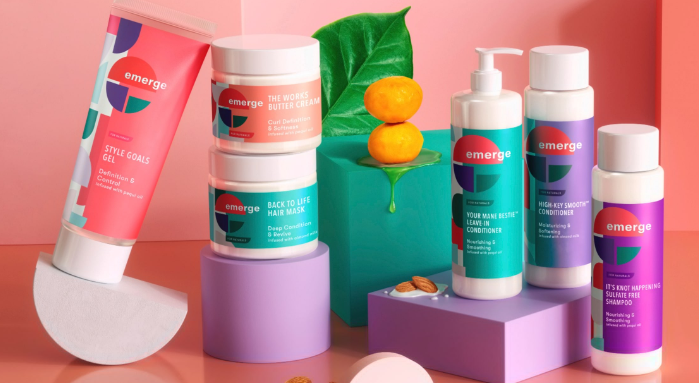
- Leave-in conditioner to repair bleached hair: Leave-in conditioner can help to restore moisture to bleached hair. Look for a conditioner that contains natural oils, like coconut oil or argon oil. Apply the conditioner to your damp hair and let it air dry.
- Use a gentle shampoo: Gentle shampoo can help to preserve the moisture in your hair. Avoid shampoos that contain sulfates, which can strip away natural oils. Look for a shampoo that is labeled “for color-treated hair.”
- Cut back on shampoos: Shampooing too often can dry out your hair. Try to shampoo your hair only two or three times per week. When you do shampoo, use a gentle, color-safe shampoo.
Use sun protection in hydrating bleached hair: After you’ve taken the necessary steps to hydrate your hair, it’s essential to protect it from the sun. The sun can damage bleached hair and make it more susceptible to breakage. Use a leave-in conditioner with SPF, and wear a hat when you’re outside for extended periods.
Rice Water Rinse Method
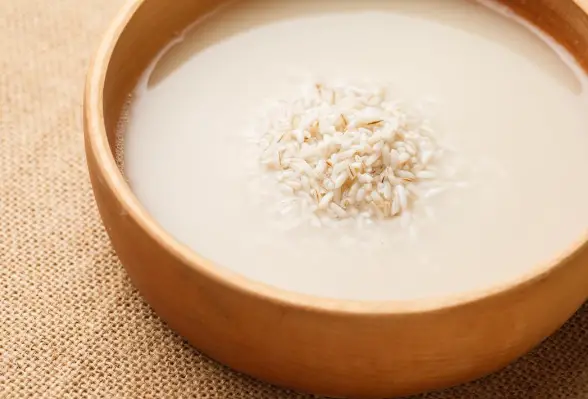
Rice water rinse has Inositol to repair bleached hair. Inositol is a carbohydrate that can penetrate the hair shaft and repair damage from the inside out.
- To make rice water rinse, cook one cup of rice in two cups of water.
- Let the rice cool, and then strain it.
- Pour the strained liquid over your hair after shampooing and let it sit for 10 minutes.
- Rinse with warm water.
Use A Boar Bristle Brush
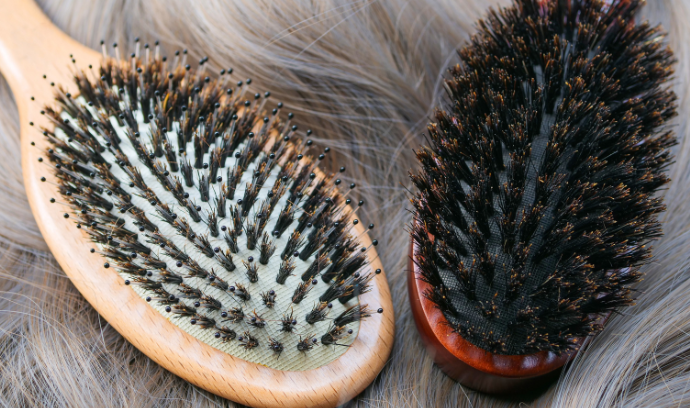
- Another effective way to repair bleached hair is by using a boar bristle brush. This brush helps distribute natural oils from your scalp to the ends of your hair.
Scalp massage
Scalp massage helps repair bleached hair by stimulating the scalp and promoting blood circulation. It also encourages the growth of new hair follicles and strengthens the existing ones. You can massage your scalp with olive oil, jojoba oil, or any other carrier oil. Just add a few drops of lavender or rosemary essential oil to it. Massage your scalp for 10 minutes every day.
Cold Water
Hot water can further damage your bleached hair and make it dry and brittle. So, washing your bleached hair with cold water is always better. It will not only help seal the cuticles but also prevent them from further damage.
Tips and Precautions While Fixing Bleached Hair:
- Be careful with chlorine: Chlorine can dry out and damage bleached hair. If you’re swimming in a chlorinated pool, wear a swimming cap. Rinse your hair with clean water as soon as you get out of the pool.
- Avoid heat styling: Heat styling can further damage bleached hair. If you must use heat, use the lowest setting possible and a heat protectant product. Let your hair air dry whenever possible.
- Only comb hair when wet: Only comb your hair when it’s wet. Wet hair is more fragile and less likely to break. Use a wide-toothed comb to avoid damage.
- Be extra careful with bleach: If you plan on bleaching your hair again, be extra careful. Only use a small amount of bleach, and avoid leaving it on your hair for too long. Be sure to use a deep conditioner after bleaching.
- Consider getting a trim: If your hair is damaged, you may want to get a trim to help remove any split ends.A good trim can also help to improve the overall health of your hair.
- Be patient: It may take some time to repair damage to your hair. Be patient and give your hair the time it needs to recover.
These are some things you can do to help fix bleached hair. Be sure to follow the tips above to help improve the health of your hair.
DIY To Make Your Bleached Hair Look Better
You can do a few things to fix your bleached hair. One is to use a mask. There are many recipes for DIY hair masks that you can make at home. Here are a few of our favorites:
- Avocado and banana mask: Mash one ripe avocado and one ripe banana together. Apply the mixture to your hair and let it sit for 20 minutes. Rinse with warm water.
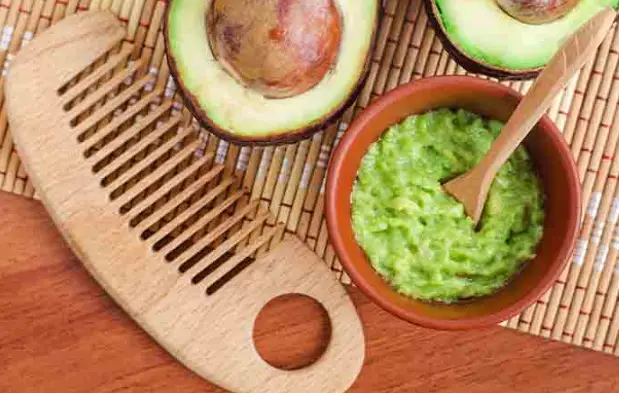
Hair Smoothie Nourishing Avocado Hair Mask - Coconut oil and honey mask: Mix equal parts of coconut oil and honey. Apply the mixture to your hair and let it sit for 30 minutes. Rinse with warm water and shampoo as usual.
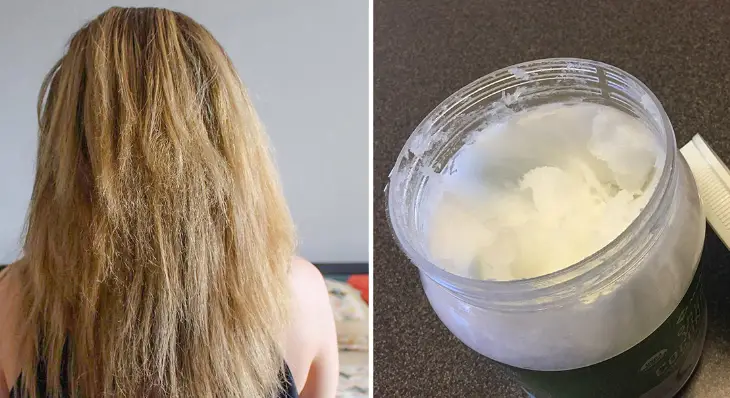
Coconut Oil for Hair: Benefits, How to Use, - Egg and olive oil mask: Whisk together one egg and two tablespoons of olive oil. Apply the mixture to your hair and let it sit for 20 minutes. Rinse with cool water and shampoo as usual.
- Yogurt and honey mask: Mix equal parts yogurt and honey. Apply the mixture to your hair and let it sit for 20 minutes. Rinse with cool water and shampoo as usual.
- Honey and olive oil mask: Mix two tablespoons of honey with one tablespoon of olive oil. Apply the mixture to your hair and let it sit for 20 minutes before rinsing with warm water.
These are just a few of the many DIY hair masks you can try. Experiment to find one, that works best for your hair type.
Reasons For Hair Loss And Hair Breakage After Bleaching Hair
There are a variety of reasons why you may experience hair loss or breakage after bleaching your hair.
- It could be due to over-processing, which means that too much bleach was left on your hair for too long. This can damage the hair follicle, causing the hair to fall out.
- It could also be due to an allergic reaction to the bleach, which can cause the hair to fall out in patches. If you have a history of allergies, it’s essential to test the bleach on a small area of your skin before using it on your hair.
- It could be due to damage from the bleaching process itself. Bleaching hair involves using chemicals to break down the pigment in your hair, which can weaken the hair shaft and lead to breakage.
Preventing Hair Loss Or Breakage After Bleaching Your Hair
- Make sure that you don’t over-bleach your hair. Follow the instructions on the bleach kit carefully, and only leave the bleach on your hair for the recommended amount of time.
- Second, try bleaching your hair into smaller sections. This will help to evenly distribute the bleach and prevent over-processing.
- Finally, use a deep conditioning treatment after bleaching your hair. This will help replenish the moisture and nutrients lost during the bleaching process.
Treatments For Hair Loss/Breakage After Bleaching Your Hair
If you experience hair loss or breakage after bleaching your hair, there are a few things you can do to treat it.
- Try using a protein-rich conditioner to help repair the damaged hair shafts.
- Try using essential oils like lavender or rosemary to stimulate hair growth.
- Consider taking a supplement like a biotin to help strengthen your hair and prevent future breakage.
Having Difficulty Brushing Your Hair After Bleaching?
Try using a wide-toothed comb if you find it difficult to brush your hair after bleaching it. Start at the bottom of your hair and work your way up. Be gentle as you comb, and avoid tugging or pulling on your hair. If your hair is still tangled, try using a detangling spray or leave-in conditioner.
FAQ’s:
How to take care of bleached hair?
To take care of bleached hair, use a moisturizing shampoo and conditioner, avoid heat styling, and use a deep conditioning treatment once a week.
Can bleached hair be repaired?
Yes, bleached hair can be repaired with deep conditioning, hot oil, and hair masks.
How to fix uneven blonde hair?
Uneven blonde hair can be caused by many things, including damage, over-bleaching, and improper care. To fix rough blonde hair, use a deep conditioning treatment to restore moisture and a protein treatment to repair the damage.
Can bleached hair return to normal?
It is possible to return bleached hair to its natural state, although it may take some time and effort. You can also try oil to help keep your hair hydrated.
How often should you bleach your hair?
It depends on how light you want to go and how damaged your hair is. If you have healthy, unbleached hair, you can probably bleach it every 6-8 weeks. If your hair is already damaged, you may want to wait 8-12 weeks between bleaching sessions.
When to see a pro?
If you’re having problems after bleaching your hair, it’s best to book an appointment with a professional hairstylist. They can assess the damage and recommend the best course of action.
Conclusion:
Bleached hair can be fixed with a variety of treatments and products. Be sure to seek professional help if your hair is severely damaged. With proper care, your bleached hair will be healthy and beautiful in no time!
